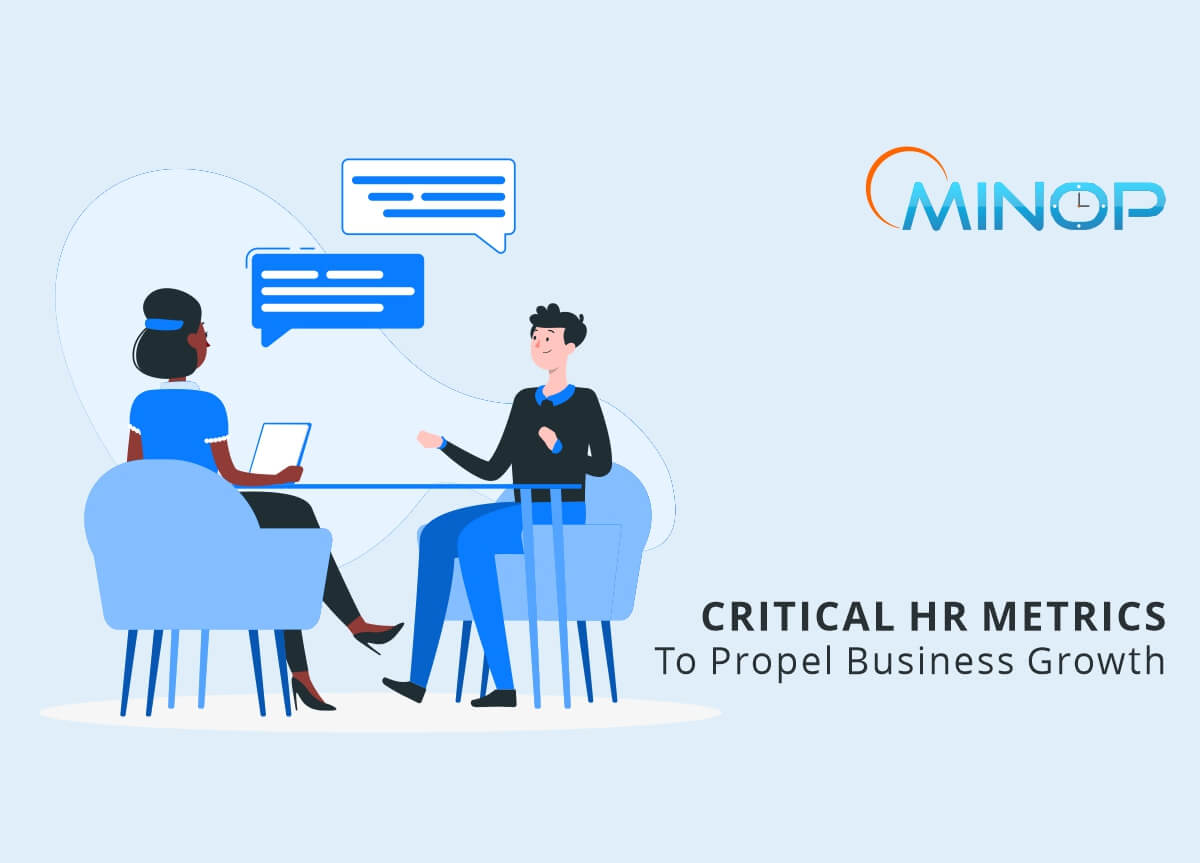Critical HR Metrics To Propel Business Growth
Posted On:- 30 June, 2022 By:- Gaurav Gorse
HR softwares are gaining enormous popularity among companies all over the world. One of the most visible evidence of that expanding popularity is the increasing usage of HR metrics as a critical component of an organization's strategy. HR metrics are crucial information that allows businesses to track their human resources and assess the effectiveness of their human capital initiatives. HR metrics for enhancing business performance is an excellent strategy to grow your company.
The Need for HR Metrics for Better Business Performance
As per our recent survey, HR professionals and executives accepted that assessing HR and its effectiveness on a company is essential.
Many employees, in fact, wish to have communications from their HR department more frequently and receive more comprehensive HR reports. HR metrics, as a result, are no longer a choice for any HR staff wishing to assist in the development of a robust, data-driven management strategy for their company.
What Are The Crucial HR Metrics?
Human resource metrics isn't just a theory that proposes "organizational metrics ."It is vital for both the HR department and employees alike. We have compiled a list of some of the critical HR Metrics that would help you better understand the topic.
1) Total Employee Headcount
The entire workforce headcount of an organization, division, or team is the indicator used to measure its size and scope. It's critical to keep accurate data on this statistic to appropriately calculate other HR measures like employee turnover.
2) Time To Hire
This metric indicates the recruiting efficiency of an organization. This is nothing but the speed at which an employee is assessed, interviewed, accepted for the job, and given the offer letter. As per one Society of Human Resource Management (SHRM) report, the average time to hire is 36 days.
3) Training Expenses Incurred Per Employee
One useful metric to take into consideration is expenses incurred per employee. This metric can be used to keep track of development costs. It also enables HR to make more informed staff development initiatives. HR recognizes that day-long training sessions are costly and insufficient in offering the ongoing learning experience that employees desire. Investing the available budget in ongoing learning experiences will result in a more effective employee training program.
4) Employee Productivity Index
Typically, the usual shifts are between 9 to 7. In post covid era, many companies are letting their employees work from home or promoting hybrid culture. As a result, performance can no longer be judged just based on who shows up.
It doesn't matter how many hours you work in a day anymore. What matters is what you were able to do. This is measured by a productivity index. Nonetheless, it raises the question of how productivity is measured. This will vary based on the employer and purpose and must be carefully considered.
5) Demographics
Age, gender, education level, and length of service of your employees are all factors to consider. When clubbing together, the factors will help you understand your employees and what they need to succeed.
6) Technology Used By The Company
It is imperative for companies today to rely on technology, including robust hardware and software. So many softwares available on the market can help organizations achieve operational efficiency. One such software is Minop, a cloud-based attendance software that is considered an important attendance software for offices.
Also, Read; How Cloud-Based Attendance Management System Manages The Modern Workforce?
7) Employee Turnover Due To Overtime
Employees don't mind slogging, given the urgency of work and nearby deadlines. But, the flip side to this practice is higher absence rates post overtime work and employee efficiency turnover. However, this problem can be solved by recruiting an additional workforce.
8) Employee Satisfaction
Employee satisfaction is becoming a more well-acknowledged HR metric. Happy employees are more productive, dedicated to the company, and do not mind going the extra mile for their company's benefit. Employee happiness is linked to both organizational commitment and work commitment. Low employee contentment levels in some areas of the company can be a sign of friction or work stress.
9) Employee Retention Per Division
It is ubiquitous to see high attrition rates where the managers or bosses do not understand and behave rudely towards colleagues. Employees just love good and understanding co-workers and bosses. Some managers engage and connect with their respective team members exceptionally well. Employee retention per division is an HR metric that can spot ineffective managers. With this metric, the human resource and talent management team can help them become more effective.
10) Process Optimization
Process optimization is a critical HR metric for enhancing HR efficiency through process improvement, which ultimately aids in improving the Human Resource delivery process. Metrics for process optimization are on the next level. They are still being adopted in modern enterprises because they necessitate a high data and analytics maturity level.
Bottomline
Your firm's success depends on how efficiently the human capital is utilized. However, it can be challenging to determine how your employees' work makes a difference to the organization without measuring and tracking the essential HR metrics.
Conduct a meeting with the HR and leadership teams and assess which data you need to start collecting now if you aren't already measuring any human resources KPIs. Keep it basic; there's no need to begin running hundreds of reports immediately. Verify that all of your data is assisting your firm in achieving its objectives if you are already measuring some HR metrics. Are there any metrics you shouldn't be monitoring? Do you need to add any reports?

Comments